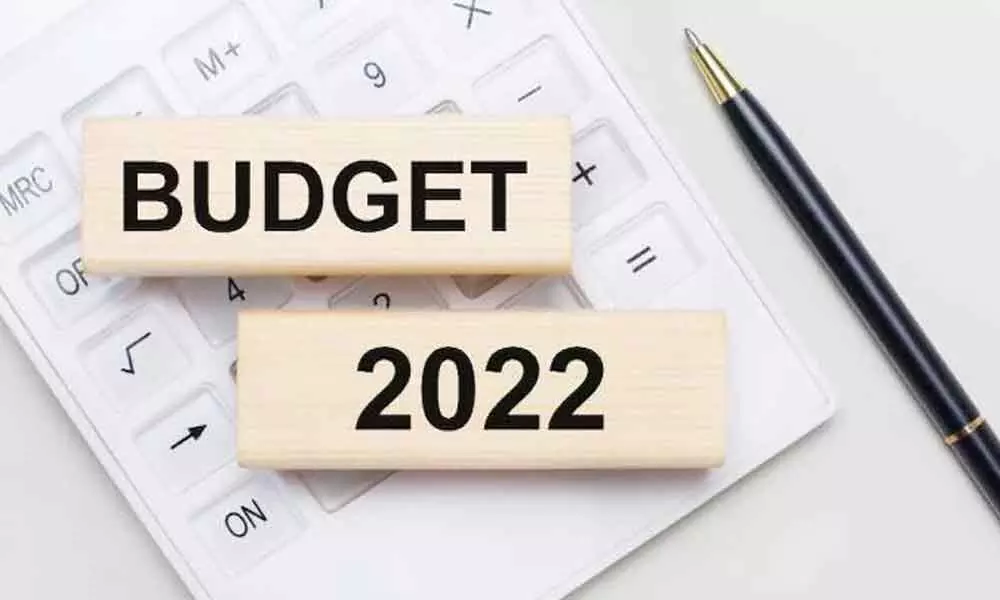Six areas that need focus to make India's economic dream a reality" Budget 2022
The upcoming budget should be framed to prepare India to march ahead and unleash its potential to the fullest in the years to come
image for illustrative purpose

The upcoming budget should be framed to prepare India to march ahead and unleash its potential to the fullest in the years to come
On one hand, the ambition to become a $5-trillion economy by 2025 and, on the other, the risk of another lockdown and supply disruptions amid rising COVID cases across the country, the finance ministry has quite a task to manage and deliver a pragmatic budget on February 1, 2022.
The government needs to aim for increasing funds flow through foreign direct investment (FDI), asset monetisation and disinvestments to cover its fiscal deficit for the next budget year. On a macro level, developing manufacturing, textile and infrastructure sectors which are large employment generators, having trickledown effect on a lot of ancillary industries including SME and MSME should remain a priority.
Incentive for Home buyers
The sector supports employment as well as ancillary industries which are mostly SMEs and MSMEs. Increase in demand for homes would indirectly benefit all associated with the sector. With lower interest rates, and banks willing to lend, this is the best time for individuals looking to buy home for end use. Tax benefit on housing loan both for interest payment and Principal repayment should be increased by Rs 50,000 each from the current limit of Rs 2 lakh and Rs 1.5 lakh.
Focus on moving domestic savings into Financial Assets
To boost the growth, our economy needs investments. The investment can either come from FDI or through shifting domestic savings into mainstream economy. The later can happen through reducing frictions in investing into financial assets. Simpler and centralised KYC to invest across all financial assets, increase in limit to invest in tax-saving mutual funds from Rs 1.5 lakh to Rs 2 lakh would be a positive step in this direction.
Focus on Financial Literacy and Personal Finance
While India is home to around 17 percent of the world's population, 65 percent of which is below 35 years of age, the financial literacy rate is mere 24 percent. Personal finance should be a subject in school which can create a base for citizens who can channel savings into investments, creating wealth for themselves and for the economy. Policy guideline in that direction in the upcoming budget would be a welcome step.
Incentives for Fintechs working for Unbanked Population
Fintechs which are in microcredit and lending, who spend in technology and various tools to reach out to unbanked or underbanked category of population not catered by mainstream NBFCs and banks, are working towards the objective of financial inclusion. A framework to provide tax incentives, easy accessibility of funds would again be a welcome step.
Reduce Lock-in Period for Sovereign Gold Bonds (SGBs)
The SGB was launched with an objective to bring down the demand for physical gold purchase and shift domestic savings into financial savings. Reduction in lock-in from five years to three years and avail LTCG benefit upon exiting after three years, will bring back money in the hands of households and individuals. This will help in increasing the circulation of money in the economy leading to more consumption and investments.
Waive Commodity Transaction Tax (CTT)
India being one of the largest markets for physical gold and various commodities, has potential to become price maker rather than price taker. After imposition of CTT, volumes on exchanges have fallen drastically and traders have shifted their base to other locations like Dubai. With more financial instruments like Bullion Index, Option contracts, delivery centres and warehousing facility and recently announced International Bullion Exchange, waiving CTT will bring enough participation and volumes to Indian markets and the revenue earned would be much higher than what is currently being earned through imposition of CTT.
An economy which ranks third in terms of purchasing power parity (PPP) and has been growing over 7 percent, with over 800 million internet users, over 65 percent of the population below 35 years of age, India has never been in such a sweet spot before. I am optimistic that the upcoming budget would be a budget to prepare India to march ahead and unleash its potential to the fullest in years to come.
Disclaimer: The views and investment tips expressed by investment experts on BizzBuzz News are their own and not those of the website or its management. BizzBuzz News advises users to check with certified experts before taking any investment decisions.

